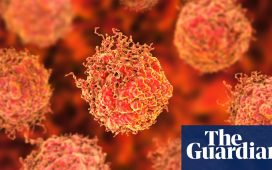According to the British Medical Journal, “Not all foods have addictive potential.” Sounds like the writer had just struggled through a couscous salad. There’s some very non-addictive grub out there, and most of it’s good for you. Heaps of runner beans, great squidgy clods of spinach, bottomless bowls of vegetable soup, vast leaves of molar-defying kale – we’d all live for ever if that was all we ate. Or at least it would feel like that.
The same could not be said for spaghetti carbonara – it’s not very good for you, and yet I have often found eating it to be a test of endurance. The British version, that is. I’m sure in Italy it’s quite different: the thinnest of eggy coatings on perfect pasta with a subtle sprinkling of pancetta. But in the UK, it’s an eternity of creamy sauce melding into mushy coils of spaghetti, relieved only by the occasional oblong of packet ham glooping to the surface. The first mouthful hits the spot, but after that it’s like trying to consume a bog: however much you stuff in your mouth, the mixture just resettles and there’s the same amount left. You end up eating garlic bread alongside it just to break the monotony of texture.
This was not the point the BMJ was trying to make at all. It was not mournfully reflecting on mastication marathons, but warning that some food genuinely is addictive. That sounds like a joke: of course we’re addicted to food. We’ve got it bad. If we go cold turkey, eschewing everything including cold turkey, we die. But that’s not what the journal is getting at. Some food, research has shown, is differently addictive. Addictive above and beyond our nutritional needs. Addictive like alcohol, tobacco and gambling.
On the face of it, this seems like one of those bits of research that only demonstrates something everyone already knows. That doesn’t render it invalid. Throughout history there has been a lot of stuff people supposedly already knew that turned out to be bullshit. Science is there to distinguish the sage proverbs – “a stitch in time saves nine” – from the old wives’ tales – “whatever the illness, bleeding the patient is bound to help”. Stupid old wives. Though all those bleeding doctors were men, so full credit to them for finding a misogynistic way of referring to the practice once discredited.
Still, this is something that feels true: we want to eat more of the things that are nice to eat. More and more of them. Much more than we need or is good for us or, ultimately, we can endure. We all feel the magnetism of the Mini Cheddar. There they are, in a bowl. You feel that you would like to have one, so you do. Then you feel, more strongly than you felt you would like to have one, that you would like to have another one. This accelerating desire continues, not indefinitely, but far beyond the point where the ingested salt, wheat flour and dried cheese are of positive metabolic use. I’m not saying Mini Cheddars exert an equal pull to the deepest yearnings of crack withdrawal, but it all conforms to the same pattern.
This research, an analysis of 281 studies in 36 countries, makes all that official. Some foods can “evoke similar levels of extracellular dopamine in the brain striatum to those seen with addictive substances such as nicotine and alcohol”. And what sorts of foods are these? According to the BMJ, we’re talking about UPFs. Ultra-processed foods. That basically means packet food – breakfast cereals, ready meals, sweets, chocolate bars, processed meats etc. In the UK, it makes up more than half of our diet. So the 14% of adults and 12% of children the research claims are addicted to them sound like conservative estimates. (Though not Conservative estimates, which would probably be: it’s all fine and obesity is just a manifestation of economic growth.)
These foods are often quite bad for us, particularly if we eat loads of them. Two-thirds of adults in the UK are overweight or obese, so that’s well over two-thirds by weight. What to do? The researchers suggest similar approaches to those adopted with other addictive substances, such as tobacco. Labelling to warn of the foods’ addictive properties and restrictions on advertising – things like that ban on junk food TV ads before 9pm that the government recently shelved. Then again, it’s also shelved a raft of environmental measures, so perhaps the thinking is that it doesn’t matter how fat we all get if the planet’s becoming uninhabitable anyway? Or is the idea that we use weight gain as a form of human carbon capture? Out of the atmosphere and on to everyone’s arses.
Sadly, the fact that UPFs are both addictive and bad for us is not a coincidence. The moreish quality is the tastiness we all associate with unhealthy food. The researchers illustrated this with the example of an apple, a salmon and a chocolate bar. The apple has a carbohydrate-to-fat ratio of roughly 1:0, the salmon’s is 0:1, but the chocolate bar is 1:1. This ratio rarely occurs in nature and our metabolisms behave like they’ve struck nutritional gold which, in the hunter-gatherer era for which our bodies evolved, they would have done. Nowadays there are shelves and shelves of packets packing that sort of dopamine-triggering, saliva-inducing punch, and there’s nothing to stop us gorging on them but willpower.
In the unlikely event of any government being able to endure the lobbying might of global UPF manufacturers, some warning labels and some advertising restrictions might be worth a try. But I can’t imagine they’d make a huge difference. We already know about this addictive quality – it’s called deliciousness.
How insulted would a Michelin chef be if one of their culinary creations didn’t qualify for an addictiveness warning? Without one, the state would effectively be saying: don’t worry, there’s no danger that you’ll eat any more of this than is good for you. When it comes to food, a sticker saying it’s compulsively moreish is as much a slogan as a warning. So maybe the sector can be encouraged to self-regulate? Pringles have shown the way: once you pop, you can’t stop.
-
David Mitchell’s new book, Unruly, is out now








